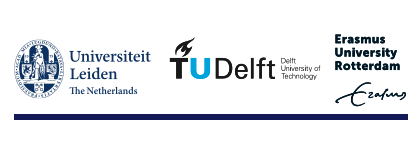Our population dictates the quantity of food needed to achieve food security. Sadly, the number of people increases per second which must correspond with the food produced. And sadly, we cannot produce food per second to cater for the new addition of people.
So, producing food requires a pre-planned process, and it is a known fact in our clime that the quantity of food produced or cultivated during the rainy or wet season is significantly higher compared to the dry season. This has been age-long practice where smallholder farmers are attuned to cultivate or produce more crops due to abundance of rainfall, which is a source of water for the crops. However, in recent times the climate change crisis has affected the pattern of rainfall and in some cases, drought has been experienced affecting the quantity of food produced. Many smallholder farmers have been adversely affected and discouraged to produce food, cutting down their production capacity as a result of this uncertainty.
Therefore, it is paramount that an alternative source of water should be established. For smallholder farmers who have access to dam water and other alternative sources of water, distribution of water on the farm is still a major issue, and the current practices adopted have encouraged the use of too much water, which is not cost effective and encourages water wastage. Moreover, drip has not been widely adopted due to its high cost of installation and maintenance, it can only be used for high valued crops (as the return on investment is economically feasible). So, there is an urgent need to identify water saving practices or equipment that can be adopted for smallholder farmers, at an affordable cost, environmental friendly and simple to be used.
Water is an important asset to food production, and sustainable usage of water for food production should be critical to agricultural stakeholders, and it starts from primary production. Farmers need to be efficient in using natural resources to increase productivity. Importantly, water used for irrigation needs to be managed efficiently to avoid water wastage at the farm level. Thus, the appropriate technology that achieves that aim needs to be affordable, adaptable and economically viable in order to achieve food security.
Yours-in-Service
Babatunde
Therefore, it is paramount that an alternative source of water should be established. For smallholder farmers who have access to dam water and other alternative sources of water, distribution of water on the farm is still a major issue, and the current practices adopted have encouraged the use of too much water, which is not cost effective and encourages water wastage. Moreover, drip has not been widely adopted due to its high cost of installation and maintenance, it can only be used for high valued crops (as the return on investment is economically feasible). So, there is an urgent need to identify water saving practices or equipment that can be adopted for smallholder farmers, at an affordable cost, environmental friendly and simple to be used.
Water is an important asset to food production, and sustainable usage of water for food production should be critical to agricultural stakeholders, and it starts from primary production. Farmers need to be efficient in using natural resources to increase productivity. Importantly, water used for irrigation needs to be managed efficiently to avoid water wastage at the farm level. Thus, the appropriate technology that achieves that aim needs to be affordable, adaptable and economically viable in order to achieve food security.
Yours-in-Service
Babatunde
Related




I agree entirely, Babatunde: “Water is an important asset to food production, and sustainable usage of water for food production should be critical to agricultural stakeholders, and it starts from primary production. Farmers need to be efficient in using natural resources to increase productivity. Importantly, water used for irrigation needs to be managed efficiently to avoid water wastage at the farm level.” But I like to add that African soils where arable farming dominate are naturally lacking nutrients so severally, that in particular the low availability of nitrogen and phosphate for crops is limiting crop growth more than the availability of water. Investments in soil improvement have in general a better costs : benefit ratio than investments in irrigation, while the costs : benefit ratio of using expensive irrigation water improves a lot by taking care that besides water also nutrients are made available for the crop by using fertilizer.
In sub-Saharan Africa, the average use of fertilizers by farmers is only 20 kg/ha/year, against a world average of 145 kg/ha/year. Even in rainfed agriculture in the dry Sahelian countries, the present rainfall allows for 3 – 5 times higher yields by wise use of fertilizers. And where irrigation in Africa’s leads often to yields of only 1.5 t/ha of rice by lack of attention for soil poverty, even yields of 12 t/ha/year are possible (Breman, H., M. Wopereis, A. Maatman, D. Hellums, S.H. Chien & W. Bowen, 2003. Food security & economic development in sub-Saharan Africa: investments in soils or in irrigation? Presentation AEPS workshop, USAID, September 22 – 26, Rosebank (South Africa))
“Wise use of fertilizers” implies that fertilizers are used while taking care of soil health through integrated soil fertility management. After last years brainstorming in Nairobi of the African Union and partners about an African action plan for Fertilizers and Soil Health, a group of participants prepared the course book “Fertilizer and Soil Health in Africa: The Role of Fertilizer in Building Soil Health to Sustain Farming and Address Climate Change. Vanlauwe, B. et al., 2023. IFDC, Muscle Shoals. pp. 76.” It is expected that in course of 2023 the African heads of state will adopt the action plan.